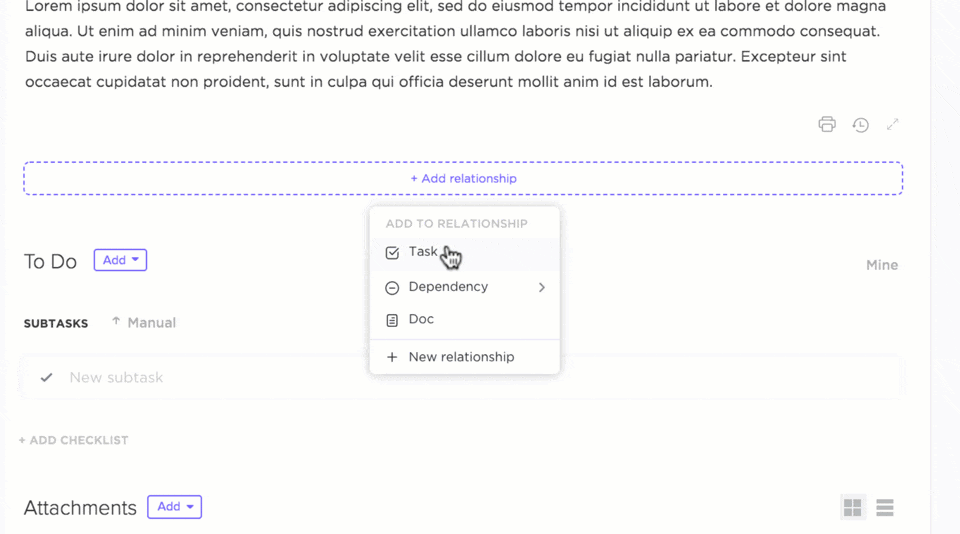Mastering Marketing ICP: A Complete Guide for B2B Marketers

Sorry, there were no results found for “”
Sorry, there were no results found for “”
Sorry, there were no results found for “”
Your target audience affects everything from messaging to channel selection to your sales cycle. Instead of targeting a vague, general description of a customer, experienced B2B marketers use a tool called an ideal customer profile (ICP) to design campaigns that resonate with their target audiences.
If you’ve ever made a buyer persona before, you might be familiar with the idea of creating audience profiles, but personas aren’t quite the same as an ICP. This unique B2B marketing tool has a big impact on your marketing strategies and, ultimately, your bottom line. 💰
Never made an ICP before? No worries. In this guide, we’ll teach you everything you need to know about ICPs, including their benefits, how they differ from other audience profiling techniques, and how to start using ICPs in your campaigns.
B2B marketing teams use ICPs to understand their target audience better. An ICP is a detailed description of the ideal customer you want to attract in your B2B marketing campaigns. Like a persona, it’s a fictionalized avatar of the kind of people you want to attract to your business.
Nobody else will see this internal tool, though: think of it as a creative exercise to help your marketing team get into the audience’s mindset.
Unlike other audience profiling tools, marketing ICPs focus more on a prospect’s firmographics. In other words, their career, job title, and the company where they work. This is ideal if you follow an account-based marketing (ABM) strategy where you focus on gaining a company as an account and not necessarily an individual consumer or buyer. 🏢
Sure, behavioral data still matters, but firmographics matter way more in B2B marketing, where decisions are made by a committee of buyers, not a single decision-maker.
B2C marketers won’t get much value out of ICPs because they target everyday consumers. B2C brands care less about a person’s job or career; what matters is their pain points and purchasing behavior. However, marketing ICPs are a must-have in B2B, where you’re targeting client accounts, not just customers.
ICPs take a little more time to create, but they have many benefits. Executed well, ICPs have the power to:
ICP marketing improves conversion rates and makes your marketing efforts more efficient, but that’s just the beginning. ICP marketing also makes it possible to:
An ICP might sound synonymous with “target customer” and “buyer persona,” but they aren’t the same thing. There are several important differences between each of these marketing tools. Here’s how they differ:
To put it simply, a target customer is a broad, general term for anyone who could potentially become a customer. Your ICP, on the other hand, is a very specific view of a single type of buyer. It’s more detailed and actionable, providing direction for both sales and marketing.
ICP marketing is one of the best B2B marketing strategies, but it will only work if you create actionable, thoughtful ICPs. Follow these steps to build an implementation-ready ICP that boosts retention and engagement.

There’s no need to create marketing ICPs from scratch. If you’ve been in business for a little while, you have a goldmine of existing customer data to build actionable, realistic ICPs. 🗂️
Whether it’s in a customer database or your email inbox, gather information like:
Next, sift through your customer data to find your best, most profitable accounts. Try to find patterns that tie these clients together. When in doubt, look for data points like:
Once you have a list of your MVP clients, dig deeper with qualitative research. Reach out to your best clients and ask them for a quick conversation or interview. Ask open-ended questions to understand their pain points, motivations, and challenges.
Sure, this requires more legwork, but qualitative research will give you more insight into each client’s goals, challenges, and decision-making process. That’s the key to writing effective ICPs that transform leads into sales.
If you ask clients to participate in interviews and nobody’s biting, you may want to offer compensation, like gift cards or exclusive discounts, to make it worth their time. If that isn’t an option, ask your customer success agents for their insights instead. They speak with your clients day in and day out, so they’re the perfect source of information on client pain points.
We love qualitative research, but you can’t act on gut feelings alone. After fleshing out your qualitative research, back up your assumptions with hard data. Gather information on client demographics, preferences, and buying triggers to understand the key characteristics of your ideal buyers. 📊
The easiest way to do this is to go through your existing customer data, but only look at information for your MVP customers. If you find that certain data points are missing, send quick surveys to your clients, asking them to fill in the blanks.
It’s showtime! Based on your research, create a firmed-up ICP that includes:
You put in a lot of work to build this ICP, but don’t expect it to stay the same. ICPs should evolve as clients change and your business grows. Periodically review your ICP based on new data, market dynamics, and your company’s goals.
You spent a lot of time creating your ideal customer profiles, so don’t let them wither in the archives. ICPs are only useful if you integrate them into your marketing strategies.
That’s all well and good, but translating a high-level strategy into your marketing team’s workflow isn’t always simple. Enter ClickUp, the universe’s favorite free project management solution. We help B2B businesses blend their data, ICPs, tasks, Docs, and more in a truly all-in-one platform.
Say goodbye to platform switching and spend your time where it belongs: serving your customers. Rely on ClickUp’s innovative features to blend marketing ICPs with your everyday workflow.

Most B2B buyers aren’t ready to make a purchase when they first hear about your solution. They require a lot of follow-ups, meetings, and nurturing. Structure your sales approach and keep tabs on all customer interactions with the ClickUp customer relationship management (CRM) feature. Never hunt for customer information again. Build your own custom CRM within ClickUp, linking each client record to a custom Database, tasks, Chats, projects, and more.

B2B marketing can be complicated, but ClickUp streamlines everything for you. Create a ClickUp Hierarchy to give you more flexibility and control over your clients and projects. If you happen to use multiple ICPs, ClickUp allows you to create a structured list of all customer profiles with the Hierarchy feature, organizing all ICPs in one clean, easy-to-understand interface.

Sure, you can build a CRM from scratch in ClickUp, but you don’t have to start from square one. From customer profiles to marketing plans, ClickUp has a template for just about everything—and yes, that includes ideal customer profile templates. 📚
Jumpstart your ICP creation with the ClickUp User Persona template, a preformatted profile ready for your client data. Toggle between custom views, track personas, assign tasks, and even create priority labels for the most important prospects.
Whether you’re doing ABM or a different version of B2B marketing, ideal customer profiles are essential to generating quality leads that (hopefully) convert into loyal customers. While it’s important to create a solid ICP, this tool won’t make a difference for your business unless you put it into practice.
Actionable strategies win accounts. When wins matter, go with ClickUp. Our all-in-one work platform combines the best of sales CRMs, automation, templates, organization, and much more.
See the ClickUp difference firsthand: Create your free Workspace now.
1. What does ICP stand for in B2B?
ICP stands for “ideal customer profile.” This is a helpful tool B2B marketers use to attract an ideal customer through content marketing, personalization, and individualized sales outreach.
2. What does ICP mean by strategy?
“Strategy” refers to the tactics a company uses to define, identify, and target its ideal customers. ICP marketing strategies help companies optimize their marketing efforts, aligning resources with their ideal customers in the hopes of converting more leads into sales.
3. What is the difference between a target customer and an ICP?
A target customer is a more generic pool of potential customers. An ICP is more specific and detailed, honing in on a single type of customer within the target audience that the business wants to focus on.
© 2025 ClickUp